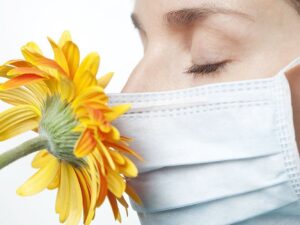Seasonal allergies – symptoms and control methods

Summer is a wonderful time of year, and everyone loves and waits for it. But often the pleasant experience of the long-awaited warm days is overshadowed by allergies.
⠀
For example, in May and June, deciduous and coniferous trees can be allergens. In June-July, cereal plants are allergens. August is the time of flowering of the Compositae family, buckwheat, nettle and plantain, as well as weeds, which can also cause allergies.
⠀
It is generally thought that poplitee fluff is one of the main allergens in summer but it is not true, the fluff does not cause allergies but it can irritate the mucous membranes in the nose and eyes.
⠀
Many people with allergies are looking for simple and affordable treatments that can be used without a time limit and to which they do not develop an addiction, especially if they do not get enough relief from conventional medications and treatments.
Saline nasal irrigation may be one of them.
⠀
Saline nasal flushing removes dryness of the nasal mucosa, reduces inflammation and restores the natural moisture and pH of the mucosa.
⠀
Also, flushing the nose with a large volume of saline solution helps to reduce the viscosity of nasal secretion, relieve nasal congestion and improve nasal breathing.
⠀
Saline irrigation solution helps remove pollen from the nasal mucosa. Its effectiveness is increased if used after a walk outside.
⠀
Also, using a saline solution before using a medicine in the form of a spray increases its effectiveness.
⠀
Thick mucus can prevent the steroid from working on the mucosa, and the saline solution will clear the thick mucus and impurities from the nose.
⠀
For patients with pollen allergies, one to three irrigations per day during the flowering season are recommended before using nasal sprays.
⠀
Translated with www.DeepL.com/Translator (free version)
